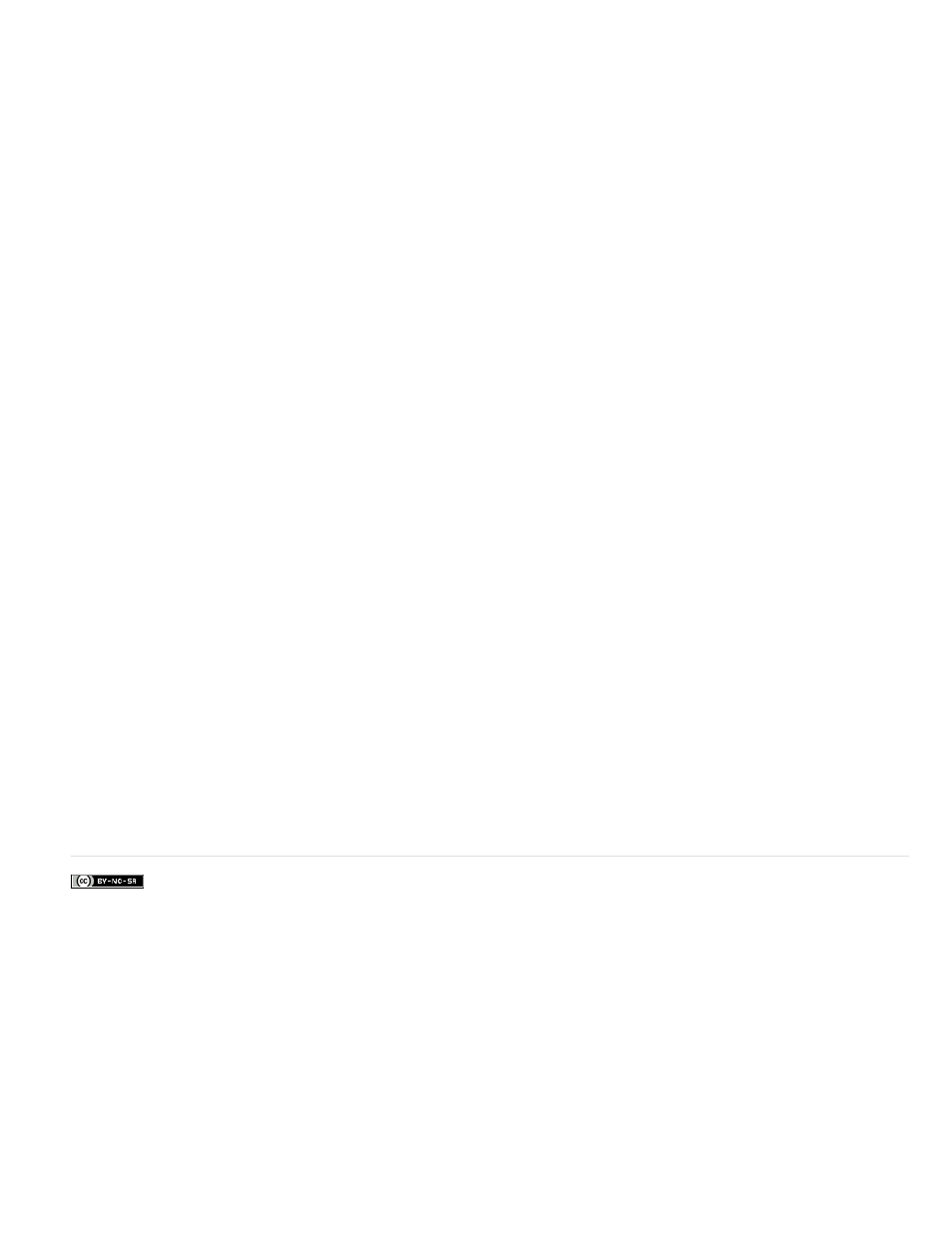Adobe InDesign User Manual
Page 670

Facebook posts are not covered under the terms of Creative Commons.
GIF Options (Palette)
JPEG Options (Image Quality)
JPEG Options (Format Method)
Ignore Object Export Settings
CSS Options
Generate CSS
Add Style Sheet
JavaScript Options
let InDesign decide which format to use in each instance. Choosing PNG disables the image compression settings.; use PNG for lossless images
or for images that include transparency.
Lets you control how InDesign handles colors when optimizing GIF files. The GIF format uses a limited color palette, which
cannot exceed 256 colors.
Choose Adaptive to create a palette using a representative sample of colors in the graphic without any dithering (mixing of small spots of colors to
simulate additional colors). Choose Web to create a palette of web-safe colors that are a subset of Windows and Mac OS system colors. Choose
System (Win) or System (Mac) to create a palette using the built-in system color palette. This choice may cause unexpected results.
Select Interlace to load the images progressively by filling in missing lines. If this option is not selected, an image looks fuzzy and gradually
becomes clear as the image reaches full resolution.
Determines the trade-off between compression (for smaller file sizes) and image quality for each JPEG image
created. Low produces the smallest file and lowest image quality.
Determines how quickly JPEG graphics display when the file containing the image is opened on the web.
Choose Progressive to make the JPEG images display gradually and in increasing detail as they are downloaded. (Files created with this option
are slightly larger and require more RAM for viewing.) Choose Baseline to make each JPEG file display only after it has been completely
downloaded; a placeholder appears in its place until the file is displayed.
Ignores Object Export Options applied on individual images. See
Advanced options
Use the Advanced area to set CSS and JavaScript options.
Cascading Style Sheets (CSS) are a collection of formatting rules that control the appearance of content in a web page. When you
use CSS to format a page, you separate content from presentation. The content of your page—the HTML code—resides in the HTML file itself,
while the CSS rules defining the presentation of the code reside in another file (an external style sheet) or within the HTML document (usually in
the Head section). For example, you can specify different font sizes for selected text, and you can use CSS to control the format and positioning of
block-level elements in a web page.
Specify whether you want InDesign to generate a CSS for the exported file. If you select the Generate CSS option, you
can also select the Preserve Local Overrides option to include the local formatting such as italic or bold.
Specify the URL of the existing CSS style sheet, which is usually a relative URL, such as “/styles/style.css.” InDesign
does not check whether the CSS exists or is valid. You can use Dreamweaver to confirm your external CSS setup.
Select Link To External JavaScript to run a JavaScript when the HTML page is opened. Specify the URL of the JavaScript,
which is usually a relative URL. InDesign does not check whether the JavaScript exists or is valid.
665
